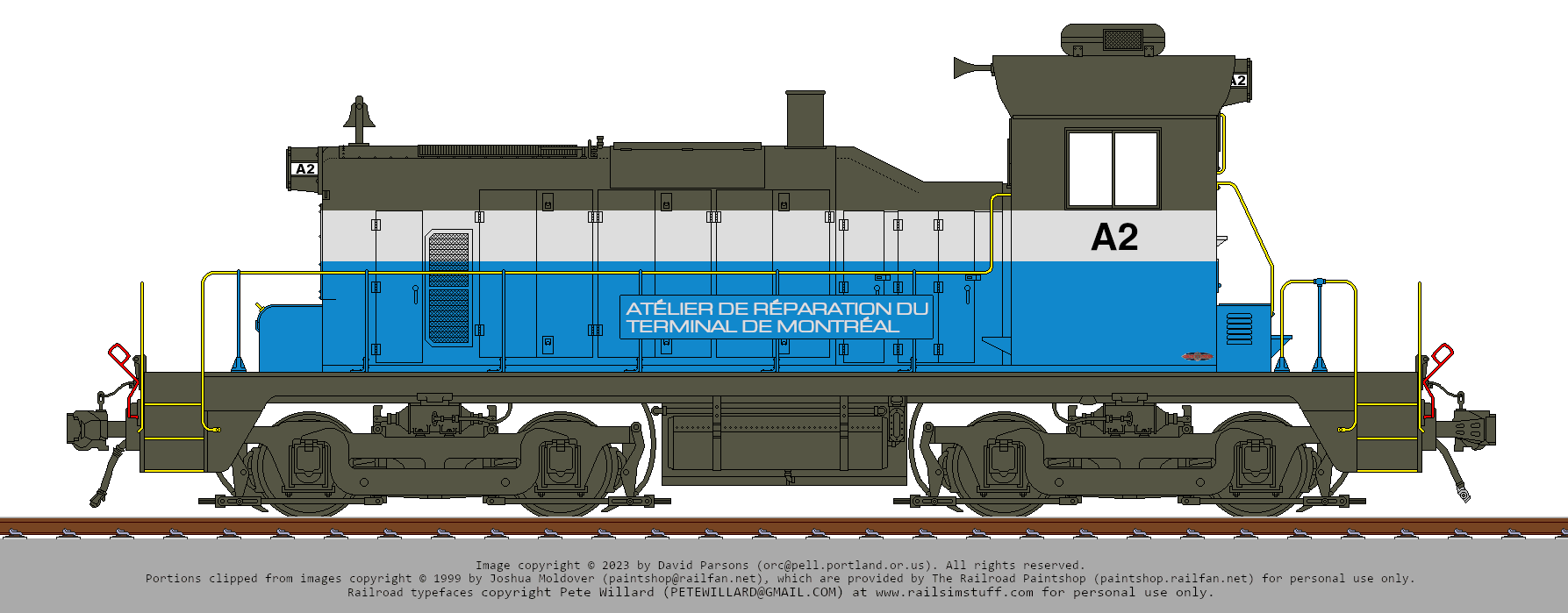In 1910, the TdM abandoned their original backshop complex – at this point impossibly cramped – on the south shore of the St Laurence opposite downtown Montréal and moved into a more modern, and more importantly more spacious, facility on the east side of Iberville, just south of the junction between the line to the United States and the south shore line to Québec City.
The plan was that the new Iberville shops would become the backshop for the TdM, the LT&L, and the PV&T’s Canadian-based locomotives, which it did capably for the next 52 years, helping the TdM stubbornly stick with steam while railroads all around switched to diesel. And then the three railroads merged, and upper management pulled the plug on the steam program, leaving the shops with an absurd amount of unused space.
A somewhat more sensible railroad would have closed either the PV&T’s Portland shops or Iberville, but there was a lot of talent working there and management was understandably reluctant to lose them. Portland was fairly busy maintaining the motors, so Iberville started doing complete rebuilts of some of the older diesels, that is they started but then the accountants looked at the cost of maintaining the small fleet of 244-equipped diesels and recommended that they be dumped in favor of Alco/MLW’s latest and greatest.
When the decision to retire the 244s came down, the shops offered to instead rebuild and modernise them with new electrical gear and 251s. This recommendation was not completely taken, but it wasn’t dismissed out of hand, and the shops were given permission to rebuild 5 units while the rest were being disposed of.
Done, done, done, and done. All successful rebuilds, so the shops were given a free hand to rebuild other locomotives as needed.
But there weren’t enough left on the roster, which resulted in a bunch of irritated correspondence between the accountants (who who wanted to shut down the shops and concentrate all locomotive servicing in Portland), upper management (who didn’t want to lose the absurdly talented shop crews) and the Iberville shops (who just wanted more locomotives to rebuild.) This impasse was broken when the board asked if the TdM’s locomotive rebuilds were good enough to sell, and when the shops (indignantly) said “is this even a question?” the response was something along the lines of “actions speak louder than words; prove it.”
So they did; Concord Power & Light’s #2 was up for sale, so the PV&T purchased it, shipped it up to Iberville, and the crews went at it. One year later, after a fairly intensive test period on the LT&L & TdM, it was painted in a hastily designed demonstrator paint scheme and sent around to the remaining Alco/MLW fleet operators, returning with a round dozen orders to remanufacture a collection of old RS-2s & -3s into new RS-251s & -351s.
With the ability proven, the TdM spun off a new venture – named the “Iberville Locomotive Works” – which built a new manufacturing facility (including the now-empty buildings in the existing shops complex), contracted/hired about half of the shops workers, and went into business remanufacturing old locomotives into new 51 class machines (ILW has since expanded into building locomotives from scratch, but that’s a subject for a different article.)
The shops, freed of manufacturing duties, went back to maintaining the existing diesel fleet (and devising new colour schemes for them) which they continue to do today (with only minimal spillover to and from the new locomotive manufacturer next door.)
